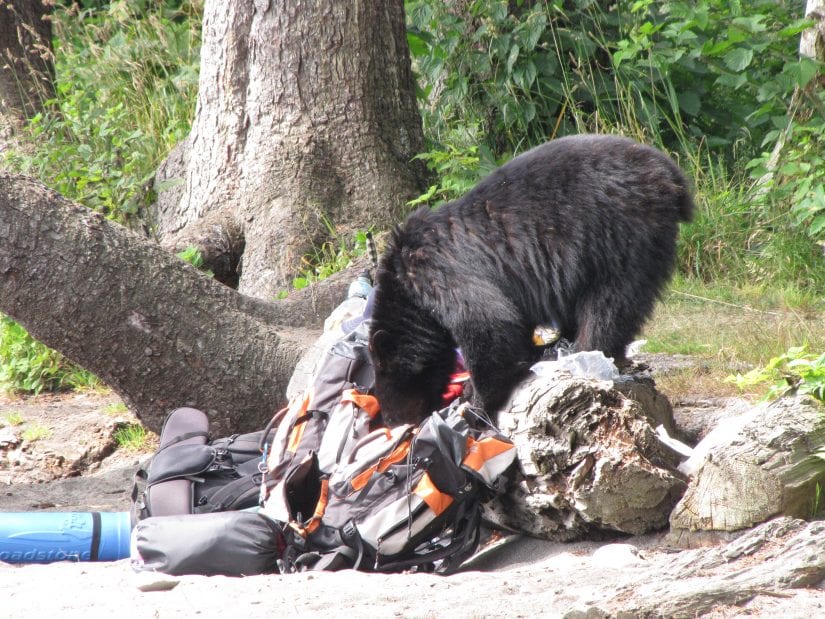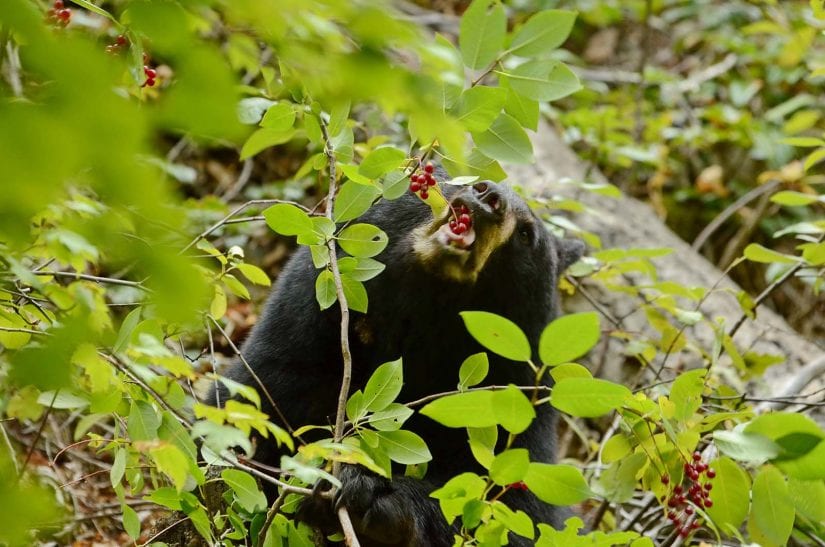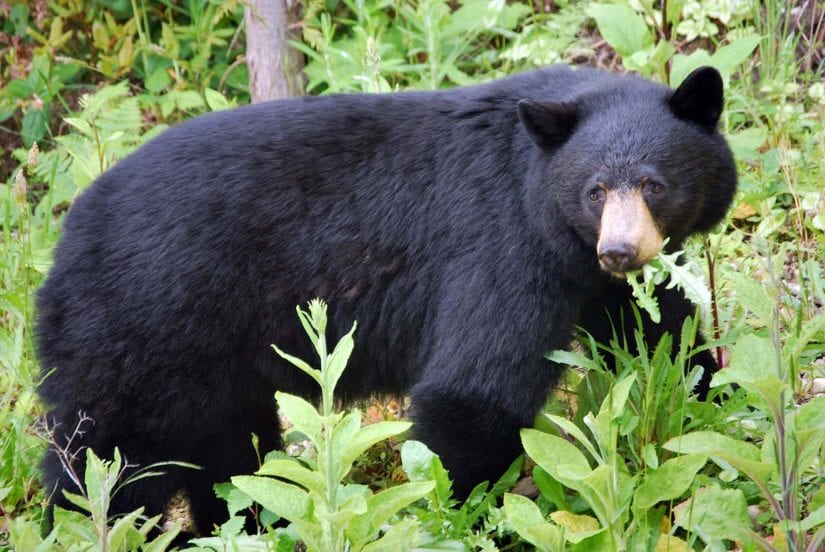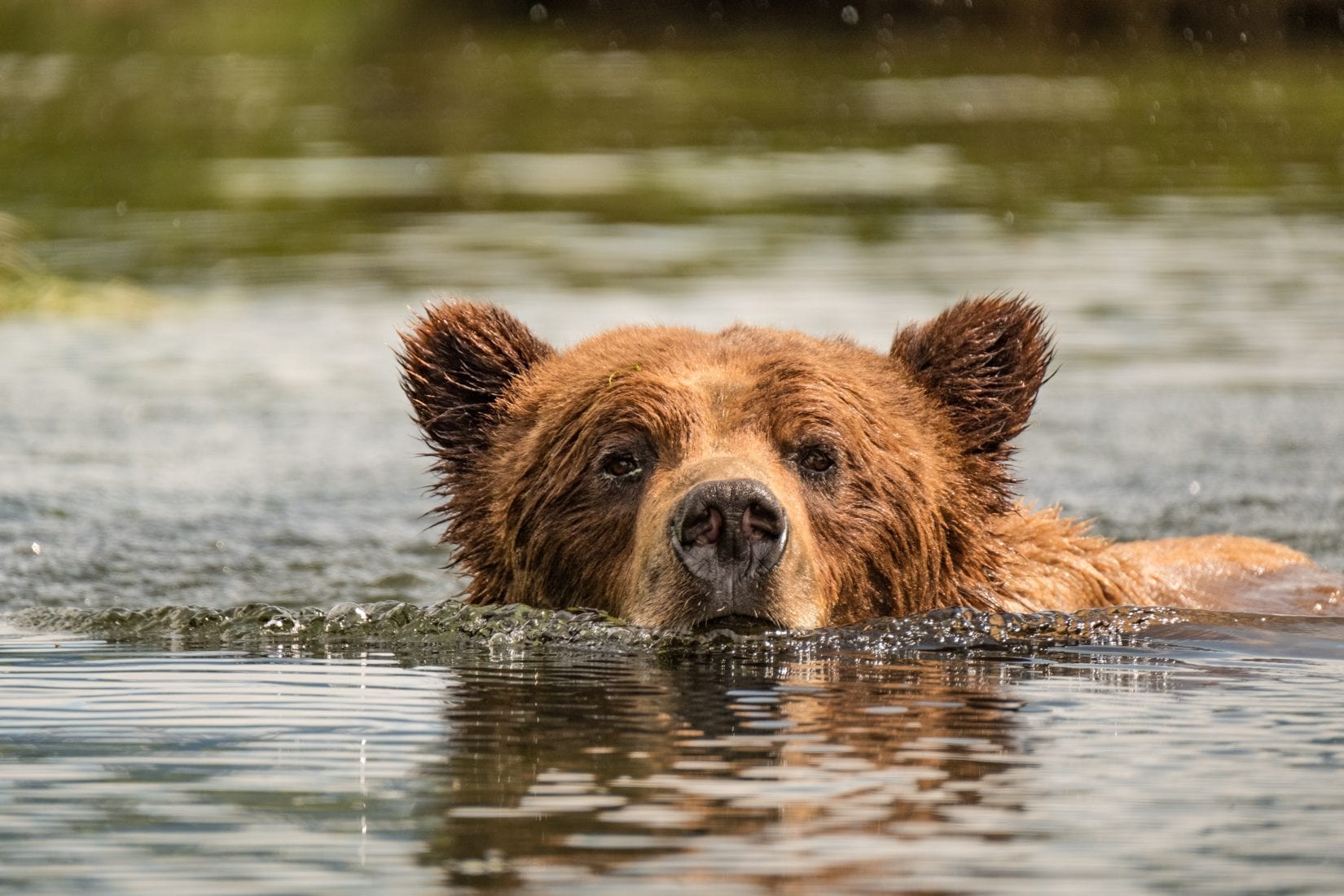Have you seen a bear in your neighbourhood? Spread the word about how to deal with curious bears in your neighbourhood with our door hanger (PDF). Contact us to have door hangers sent to you.
Living with bears
B.C. is lucky to have both black bears and grizzly bears. But, as human areas expand into wild bear habitat, bear encounters become a normal part of life. When bears are preparing for hibernation in the fall, they need to build up fat to survive the winter. Similarly, when they come out of hibernation in the spring, they need to build up the weight lost during hibernation. Bears looking for quick and fatty foods may get into human sources like compost, bird feeders, garbage, fruit trees, bee hives, chicken coops or pet food.
Human-sourced food is rich in calories, and requires less time and energy to get. Unfortunately, eating these foods brings bears and people closer together. Over time, bears may lose their natural fear of people and start to associate people with food. Sadly, being careless with our garbage and other attractants results in hundreds of “problem” bears killed by conservation officers in B.C. every year.

Be bear aware
Bears come out of hibernation in the spring, but the timing can vary depending on local weather conditions and terrain. For example, some bears on the coast have been spotted roaming during mild winters.
How to avoid attracting hungry bears:
- Keep garbage, recycling and compost inside until pick-up day
- Regularly clean garbage and recycling bins, cover food compost with dry leaves or grass clippings
- Pick up ripe and fallen fruit daily, harvest ripe vegetables
- Clean barbecue grills after every use, store when not in use
- Don’t leave pet food outside or use bird feeders from April to October
- Learn about the Bear Smart Community Program
- Ask your municipality to adopt bylaws that will protect bears

Is relocation possible for “problem” bears?
Relocation is generally not a humane or effective solution. Relocating “problem” bears does nothing to change human behaviour and is only a short-term solution. If food is still available, then other bears may move in. Age, sex and experience of the bear may also make relocation more or less effective. Releasing an animal within its home range may be an option in an emergency situation, but should be carefully considered.
Relocating or translocating (long distance transfer) bears is also difficult for the animals, and they may suffer or die as a result. As they explore new territory they could get into fights with other bears, get hit by vehicles or shot by hunters. Even if taken hundreds of kilometres away, bears may just return to where they came from. They want to return to their home ranges because they know the best travel routes, where to get food and how to find shelter.
The key to keeping bears safe is learning how to coexist with them and preventing conflict from starting altogether.

Put bear advocacy into action
Ask your city council to consider wildlife feeding bylaws and other bylaws to help manage attractants to keep bears and people safe. Check out our model municipal bylaws to get started.
Learn more from these great local organizations keeping their communities bear aware:
- Bears Matter
- Bear Smart BC
- Bear Smart Whistler
- North Shore Black Bear Society (North Vancouver)
- Hope Mountain Black Bear Committee
- Wild Wise Sooke
- Northern Bear Awareness Society (Prince George)

Grizzly bear hunting in B.C.
In December 2017, and effective immediately, the B.C. government announced a ban on all grizzly bear hunting for resident and non-resident hunters. Consistent with our position statement on hunting, the BC SPCA supported a total ban on grizzly bear hunting in the Great Bear Rainforest and province-wide, as outlined in our submission to government (PDF).

